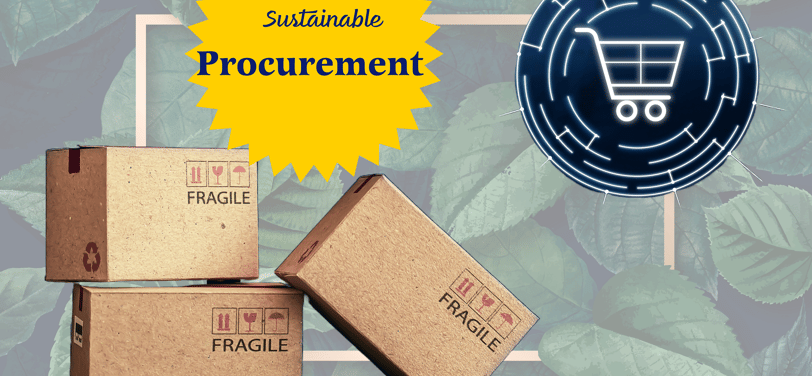How to Procure from Suppliers Complying with Sustainability Norms ?
Companies are increasingly recognizing the importance of sourcing from suppliers who adhere to sustainability norms, not only to mitigate risks but also to enhance their brand reputation and meet consumer demand for responsible practices.
Great ESG Place to Business
1/27/20253 min read


In today’s business environment, sustainability is a critical factor influencing procurement decisions across industries. Companies are increasingly recognizing the importance of sourcing from suppliers who adhere to sustainability norms, not only to mitigate risks but also to enhance their brand reputation and meet consumer demand for responsible practices. This essay outlines the steps organizations can take to procure from suppliers that comply with sustainability norms effectively.
Understanding Sustainable Procurement
Sustainable procurement refers to acquiring goods and services in a manner that considers environmental, social, and economic impacts. It involves selecting suppliers based on their commitment to sustainability, ethical labor practices, and environmental stewardship. By integrating sustainability into procurement strategies, organizations can contribute to broader corporate responsibility goals and align with global sustainability standards like GRI.
Step 1: Establish Clear Sustainability Criteria
The first step in sustainable procurement is defining what sustainability means for your organization. Establish clear criteria that suppliers must meet, encompassing various aspects of sustainability, including:
Environmental Responsibility: Assessing suppliers based on their efforts to minimize carbon emissions, manage waste, and utilize renewable energy sources.
Social Responsibility: Evaluating suppliers on their labor practices, including fair wages, safe working conditions, and adherence to human rights standards.
Economic Viability: Ensuring that suppliers are financially stable and capable of delivering quality products or services without compromising their sustainability commitments.
By setting specific criteria, organizations create a framework for evaluating potential suppliers effectively.
Step 2: Conduct a Supplier Assessment
Once sustainability criteria are established, organizations should assess potential suppliers through various methods:
Questionnaires: Distributing surveys to gather information about suppliers’ sustainability practices and policies. Suppliers can have self-assessment certificates like "Great ESG Place to Business" to start with.
Site Visits: Conducting on-site evaluations to observe operations firsthand and assess compliance with sustainability norms.
Third-Party Certifications: Reviewing certifications such as ISO 14001 (Environmental Management) or Fair Trade that demonstrate a supplier’s commitment to sustainable practices.
Utilizing a combination of these assessment methods allows organizations to gain a comprehensive understanding of each supplier’s sustainability performance.
Step 3: Implement a Supplier Selection Process
With assessments completed, organizations should implement a structured supplier selection process that prioritizes sustainability. This process may include:
Scoring Systems: Developing scorecards that quantify suppliers’ sustainability performance based on predefined criteria for objective comparisons.
Weighting Factors: Assigning weights to different criteria based on their importance to the organization’s sustainability goals. For example, environmental impact might carry more weight than cost in certain procurement decisions.
Stakeholder Involvement: Engaging relevant stakeholders—such as procurement teams and management—in the selection process ensures diverse perspectives are considered.
By adopting a systematic approach to supplier selection, organizations can make informed decisions that align with their sustainability objectives.
Step 4: Foster Supplier Relationships
Building strong relationships with suppliers is crucial for promoting sustainable practices throughout the supply chain. Organizations should:
Communicate Expectations: Clearly articulate sustainability expectations to suppliers from the outset. This includes sharing the organization’s sustainability goals and how they align with supplier operations.
Provide Support: Offer resources and training to help suppliers improve their sustainability practices. This could involve sharing best practices or providing access to tools for measuring and reporting their environmental impact.
Encourage Collaboration: Work collaboratively with suppliers to identify opportunities for improvement and innovation in sustainable practices. Joint initiatives can lead to enhanced efficiency and reduced environmental impact.
By fostering positive relationships with suppliers, organizations create a culture of sustainability that extends beyond their own operations.
Step 5: Monitor and Evaluate Supplier Performance
To ensure ongoing compliance with sustainability norms, organizations must implement robust monitoring mechanisms. This may involve:
Regular Audits: Conducting periodic audits of suppliers’ operations to verify adherence to sustainability criteria. These audits can be performed internally or by third-party assessors.
Performance Metrics: Establishing key performance indicators (KPIs) related to sustainability goals. Metrics could include reductions in carbon emissions or improvements in labor conditions.
Feedback Loops: Creating channels for continuous feedback from both suppliers and internal stakeholders regarding sustainability performance.
By actively monitoring supplier performance, organizations ensure accountability and drive continuous improvement in sustainable practices.
Step 6: Report on Sustainability Efforts
Transparency is essential in sustainable procurement. Organizations should regularly report on their procurement practices and the impact of sourcing decisions on sustainability goals. Reporting can take various forms:
Sustainability Reports: Publishing annual reports detailing progress toward sustainability objectives, including achievements in sustainable procurement.
Supplier Performance Reviews: Sharing performance reviews with suppliers to highlight successes and areas for improvement.
Stakeholder Engagement: Engaging stakeholders through forums or surveys to gather feedback on procurement practices.
By maintaining transparency in reporting efforts, organizations build trust with stakeholders and demonstrate their commitment to sustainable procurement.
Conclusion
Procuring from suppliers who comply with sustainability norms benefits the environment while enhancing an organization’s reputation and competitiveness. By establishing clear criteria, conducting thorough assessments, fostering strong relationships with suppliers, monitoring performance, and maintaining transparency through reporting, organizations can effectively integrate sustainability into their procurement processes.
As businesses increasingly recognize the importance of responsible sourcing, adopting sustainable procurement practices will become essential for long-term success in an evolving global landscape focused on environmental stewardship and social responsibility. Embracing these principles will benefit individual organizations while contributing positively to society as a whole.
#Howtoprocurefromsustainblesuppliers #GreatESGplacetoBusiness #GRI
